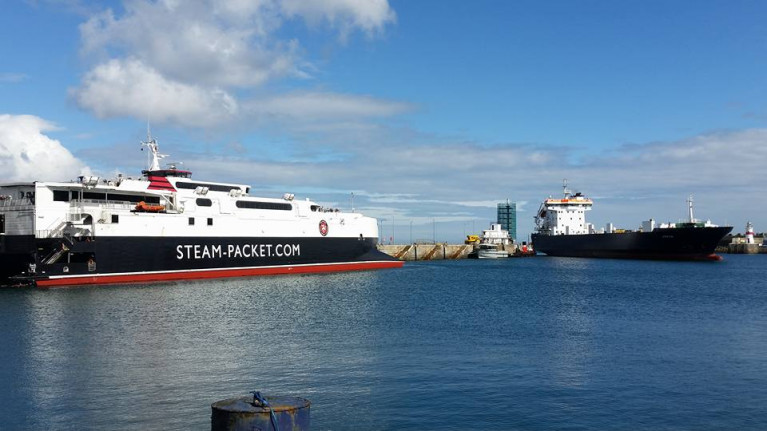Displaying items by tag: Back in service
Following repairs to a propeller of a Manx ferry, the Ben-My-Chree returned to service today plying on the main route linking the Isle of Man and the UK, writes Jehan Ashmore.
The ropax custom built in 1998 for the Isle of Man Steam Packet Co. arrived to Douglas Harbour on Sunday on completion of works at A&P Falmouth in Cornwall and successful testing of propeller and steering systems.
Ben-My-Chree re-entered the passenger and freight service of Douglas-Heysham three days ahead of schedule as the Steam-Packet already had spare propeller blades in stock.
While the Ben-My-Chree was off service the ferry firm introduced a revised timetable whereby two replacement vessels ensured duties were maintained between the Isle of Man and the Lancashire port. High-speed craft Manannan operated daily passenger ferry sailings while freighter Arrow continued to provide an essential service to the Manx capital with supplies of food and cargo against the backdrop of Covid-19.
It was during Ben-My-Chree's repositioning passage from the Isle of Man to the English south-west shipyard that drone footage captured the 22 year old ferry before arrival at the dry-dock facility.
As Afloat previously reported the IOMSPCo signed a contract for a new ferry with an Asian shipyard to replace the ageing ropax with a slightly larger ferry which is due to enter service in 2023. The new ferry is to have a higher level of onboard facilities, enhanced freight capability and be more enviromentally friendly.
According to the operator they intend to retain the 'Ben' as a reserve vessel, which is in the hands of Arrow (albeit a freight-only ro-ro ship) chartered in from Seatruck Ferries. Currently the Spanish built freighter is at anchor in Douglas Bay.
Meanwhile Manannan made manouveres in Belfast Lough this afternoon following conclusion of seasonal only routes services including Belfast Harbour but not to Dublin Port. Like all ferry operators, the key summer season was beset with Covid-19 travel restictions affecting Manx residents along with plans by holidaymakers.
Despite the troublesome season, the Isle of Man is in an extremely fortunate position of having had no active cases of Covid-19 in the Island since early June. This positive news is thanks to the remarkable efforts of the Manx people and the Isle of Man Government in addition the ability to restrict access to the island.
Access to the Isle of Man remains tightly restricted for non-residents, though according to the Steam-Packet they anticipate restrictions will be eased and look forward to welcoming visitors in 2021 when it is safe to do so noting bookings are now available through a 'Book with Confidence Commitment'. This measure is designed to provide customers with greater flexibility and peace of mind during the uncertainty caused by Covid-19.
As mentioned above Manannan's season has ceased and so the HSC will require a winter-lay-up which in recent years has taken place in Douglas Harbour where this afternoon the ferry is bound with an arrival expected to be early this evening.























